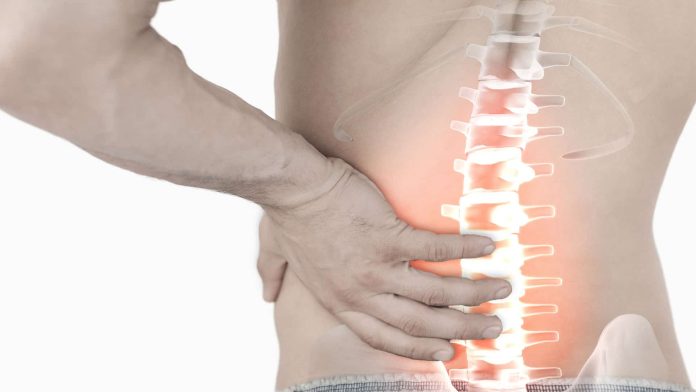Estimated reading time: 0 minutes
Your hip and lower back are two interconnected structures. A problem with one of these structures may cause dysfunction and pain in the other.
When you have chronic lower back pain, your hip movements may be restricted, and the muscles around your hip joint may become stiff and painful.
If your hip function is abnormal, your lower back mechanics may be compromised, creating pain in both places.
The lower back and hip share many muscle groups. When one muscle is injured, the neighbouring muscles may experience compensatory movements, fatigue, and discomfort.
Continue reading to find out how lower back and hip pain can coexist. While certain issues may only affect one side of your lower back and hip, others may cause pain on both sides.
Sharp discomfort in the lower back and hip on one side
A shooting and acute pain on one side of your lower back and hip may be caused by muscle spasm, joint dysfunction, and/or nerve compression in the region. The following are some of the most typical causes of this sort of discomfort.
Piriformis Syndrome
A piriformis muscle spasm in the buttocks may result in:
Pain ranging from mild to severe in the lower back, hips, and buttocks
Pain radiating to the back of the thigh
Inability to sit for long periods of time
The pain is typically felt on one side and is exacerbated by hip motions such as getting out of bed.
Overactivity of the hip rotator muscles (which help twist the hip inward or laterally) or prolonged sitting on hard surfaces are common causes of piriformis syndrome. A buttock injury could possibly be the source of this pain.
The sacroiliac joint is dysfunctional.
Inflammation of the sacroiliac joint, which connects the lower spine to the pelvis, can result in:
Sharp, stabbing pain in the lower back, hips, and buttocks
Pain that may extend down the back of your leg but normally does not extend below the knee.
Standing to sitting, climbing stairs, or sleeping on the afflicted side may cause your discomfort to worsen.
The sacroiliac joint can produce discomfort in the lower back, hips, and buttocks due to arthritis, trauma, or repetitive tension inside the joint. This joint is a common source of pain in pregnant women due to hormonal and physical changes during pregnancy.
While sacroiliac joint discomfort is more common on one side of the lower back and hip, it can affect both sides.
Piriformis syndrome and sacroiliac joint dysfunction symptoms can be confused with lumbar radiculopathy, sometimes known as sciatica.
Ache and stiffness in the lower back and hips
Lower back and hip pain might be accompanied with stiffness. This is typically a body’s protective mechanism to prevent more injury in the area. Stiffness produced by discomfort can be debilitating, significantly limiting function in the back, hip, and leg. The following are some common conditions that can cause these symptoms to coexist.
Strain in the hamstrings
Tightness in your hamstrings as a result of a strain injury may alter the biomechanics of your spine.
Tight hamstrings are shorter in length, which can affect your lower spine’s curvature and disrupt the alignment of your lower back and hip. You may experience lower back stiffness, with or without pain.
The stiffness is frequently more noticeable when you bend your spine forward. To avoid bending their hip and knee joints, some people walk with their legs rigid.
Osteoarthritis (OA) of the hip
Hip osteoarthritis (the degradation of the hip joint as we age) can cause lower back pain and hip stiffness.
Hip osteoarthritis causes stiffness and a significant loss in hip range of motion. This change may lead the hip to tilt forward, affecting the curvature of the lower spine. The inward curvature of the lower spine (lordosis) may become more apparent, causing the lower spinal discs to enlarge or herniate.
This sickness may also cause degeneration of the spinal joints, culminating in a more serious condition known as hip-spine syndrome.
In conclusion, this list may not include every possible reason of lower back and hip pain. Consult your doctor if you have pain and/or stiffness in your lower back and hip that does not go away with self-care and is interfering with your daily activities. A doctor can accurately diagnose the source of your lower back discomfort and provide a treatment plan to address the underlying condition.
Related-
Know more about Ayurvedic Spinal Disk & Radiculopathy Treatments.
GET IN TOUCH


Recent comments